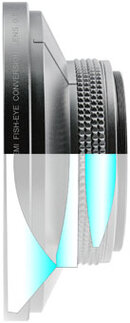shaker
Contributor
Jack, or anyone..
The big problem here, is ikelite and 10bar are offering only flat ports, for a 24mm equiv wide angle.
Flat ports do not work well even for 28mm!
Is the 10 bar wide angle converter lens is flat on top, and flat on the bottom.
Is there any way to just get a dome port? With what housing?
Thanks,
Don
I used the 5" 10Bar dome port with the LX3 and LX5 combined with Panasonic converter or Sony converter, both give 18mm underwater. It was discussed here:
http://www.scubaboard.com/forums/panasonic-planet/351751-lx3-river-underwater-photos.html






